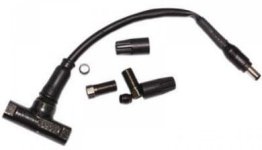No worries - puzzling that it didn't work, though. I can't get at my CA just now to test, but I might try just jumping the EBK to Gnd to be sure the ebrake isn't an issue.Degull said:Sorry that was a typo. I meant, by hooking up an ebrake lever to the CA V3 it did not cut power to the motor. ... Going to look over all my connections and test it again.teklektik said:It sounds like the test you performed successfully is exactly what you want... yes?
A description of the EBK connection can be found in this post:
EDIT - Hmm - if this still doesn't work, you might try setting ThrI->MaxInput=0.2v instead of ThrI->MaxInput=0.02v just in case the ebrake functionality is handled in hardware directly on Ti instead of by software - it will give a little larger margin for EBK to pull down Throttle In. The revised setting of 0.2v is still well below the 0.37v default voltage of Ti so there should be no ill effects by making the Setup change.justin_le said:Ebrake Cutoff: Brake inhibit input, has onboard pullup as well so you can use either a mechanical brake switch or a hall effect device. This way you don't need brake signal wires going all the way back to the controller, they can go into the CA and then the CA cuts the throttle signal.



